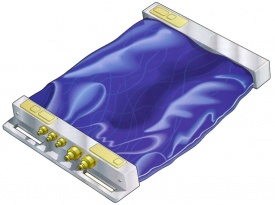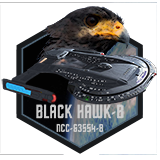
Bio-neural circuitry is a technology incorporated in bio-neural gel packs. It was first incorporated into the Intrepid-Class around 2371. Much of the usual isolinear circuitry was replaced with bio-neural cells, which can process information more efficiently, and hence speed up computer response time. Bio-neural fibers, as found in the pattern buffer relays, were part of the bio-neural circuitry.
Bio-neural technology can be affected by viruses and other infectious agents, which compromise healthy tissue of living organisms. When the bio-neural gel packs aboard Voyager were infected, The Doctor suggested inducing fever in order to fight the infection, similar to when a Human sometimes has a fever in response to infection and illness. B'Elanna Torres used an inverted warp field to superheat the vessel and kill the bacteria infecting the bio-neural circuits.
The bio-neural gelpacks outfitted on the USS Black Hawk-A later became susceptible to background radiation and bacteria that the ship encountered in the Kalisa Sector.
External Information
- Bio-neural circuitry at Memory Alpha
Credits
The above information was adapted from Memory Alpha for use on this sim.
| OPERATIONS DEPARTMENT | |
| IMPORTANT ERRATA | Operations Department • Operations Positions • Access Codes • Bio-neural circuitry • Communications • Computer Access Levels • Duty Roster • LCARS Administration • Mission Operations • ODN Network • Operating Modes • Personnel Allocation • Resource Allocation • Transportation • Ship Specifications |
| NOTABLE LOCATIONS | Chief Operations Officer's Office • Computer Core • Main Engineering • Auxiliary Control |
| PERSONNEL FUNCTIONS | Alert Status • Cabin Assignments • Computer Access Levels • Deck Listing • Department Head • Duty Roster • Operating Modes • Security Clearances • Rank Guide • Rank Comparisons • Uniforms |
| DEPARTMENTS | Command • Flight Control • Intelligence • Operations • Engineering Security/Tactical • Medical • Science • Squadron • Civilians |
